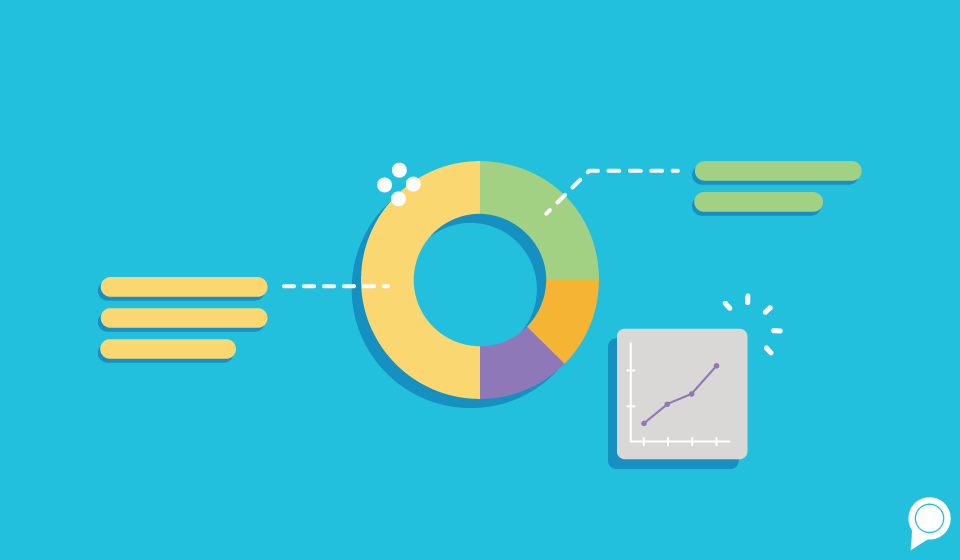

Marketing data is a lot to take in at first. With terms like click-through rate, cost-per-acquisition, bounce rates, conversion rates and more, it’s tough to know what metrics will be valuable in answering your business questions.
This blog is a guide in your quest for understanding and utilizing data, without the complicated jargon! We start with asking the right questions, understanding your business and its goals, staying objective, and using multiple metrics to tell a story.
Let’s use an example – imagine you’re a restaurant owner that specializes in high-end American cuisine, and you want to grow your weekly sales.
First things first; you need to define the question or problem you’re trying to solve. And before we get too far, “How can I make more money?” isn’t going to lead you to the answer you may need to hear.
If the goal is to make more money, try to be more specific. What products do you offer? Which ones have higher profit margins? Do you want to increase sales for a specific product or product line? How can customers order from you (online, third-party apps, in-person, other)? What hours are you open? As a restaurant, you’re probably open on the weekends, but we need to cover our bases!
Using these exploratory questions, you can start to narrow down what you will be measuring and how you will be measuring it. Trying to sift through every possible metric will lead to a profound feeling of confusion.
Ultimately, the key is to understand your business. From there, you can ask the right questions and start defining your metrics and key performance indicators (KPIs).
To continue with our example, let’s say we decided our goal is to improve our appetizer sales.
You know your appetizers are delicious, but why aren’t people buying them as you’d expect? Is it because they don’t have good taste? They don’t appreciate your chef’s exquisite cooking skills?
Don’t blame the customer or fall into a pit of confirmation bias! Take a look at your process, menus, presentation and sales skills of your wait staff before deciding your customer has bad taste.
Remember, you can’t improve your business if you don’t look at the business from a perspective of genuine curiosity and objectivity.
The ability to utilize objectivity will then open your eyes and your potential to identifying beneficial marketing analytics.
What’s the story behind your business? You’ve identified your questions, goals and customers’ perspectives, and now you should be able to compile that information into a number of data points.
And as you start to consider what metrics would be valuable, keep in mind that you won’t be able to get the whole picture with just one metric or data point. Instead, you should focus on a multitude of metrics that eventually tell a story of your current position and your goals.
As we look at our ongoing example of an upscale restaurant with the intention to grow appetizer sales, let’s take a closer look at ways to identify multiple metrics.
Perhaps the business owner or marketing manager started a campaign to share these brand new appetizers with current customers and website viewers. They initially send out an email to the restaurant’s email list and make posts for social media to gain as much visibility as possible.
As we track those actions across social media and email to your website, this means starting out by keeping an eye on click-through rate, or the percentage of users who click on a specific link, to the number of total users who view a social post or email.
This provides more insight into the number of people who are responding to the content that is used to promote services like carry-out.
On top of that, monitoring metrics like landing page visits and marketing qualified lead would then give insight into the percentage of website visitors who chose to learn more about the product or even come into the restaurant to try it!
Ultimately, increasing traffic like this to your website will bring in more target sales.
Now, these are just two metrics, but they inform our understanding of what this business wants to achieve. They want to attract potential customers through their email and social media efforts and once they are on their website, convert them to online customers.
With the amount of data in the world, it can be overwhelming to know where to begin as you search for an answer to your question. You can take a class, earn a certification, or even watch YouTube videos.
As a business owner or leader, you likely don’t have the time to become an expert in data analytics through these avenues though. Additionally, none of those options are going to include context for your specific business.
That is where RevLocal comes in – providing a digital marketing expert in your industry to sift through the fluff and find answers to your business questions with data and insights.
Subscribe to our email list to get the latest digital marketing content delivered to your inbox each week!